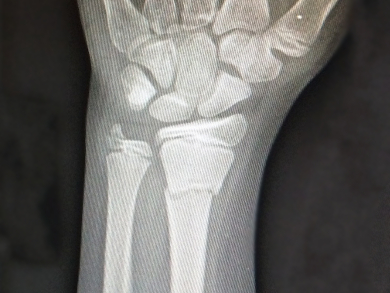Magnesium can promote bone formation and increases bone cell adhesion, proliferation, and differentiation. Magnesium phosphates are particularly biocompatible and could be useful for medical applications. However, preparing such compounds in an easily injectable form is a challenge.
Jake E. Barralet, Faleh Tamimi, McGill University, Montreal, QC, Canada, and colleagues have developed a nanocrystalline 2D biomaterial composed of Mg2+, Na+, (HPO4)2–, and (PO4)3– which has gel-like chracteristics and can be injected. The team combined solutions of NaOH, Mg(OH)2, and H3PO4 and vacuum-dried the resulting precipitate. The material was then combined with water to form a hydrogel.
The gel has thixotropic properties, meaning it becomes less viscous under mechanical stress. This allows the gel to be injected using a common insulin needle and to return to a solid-like state afterwards. The researchers tested the hydrogel’s influence on bone cells in vitro, and the results confirmed that the material is biocompatible and up-regulates the expression of genes associated with bone formation. In vivo test in rats showed enhanced bone healing.
- Two-Dimensional Magnesium Phosphate Nanosheets Form Highly Thixotropic Gels That Up-Regulate Bone Formation,
Marco Laurenti, Ahmed Al Subaie, Mohamed-Nur Abdallah, Arthur R. G. Cortes, Jerome L. Ackerman, Hojatollah Vali, Kaustuv Basu, Yu Ling Zhang, Monzur Murshed, Satu Strandman, Julian Zhu, Nicholas Makhoul, Jake E. Barralet, Faleh Tamimi,
Nano Lett. 2016.
DOI: 10.1021/acs.nanolett.6b00636



